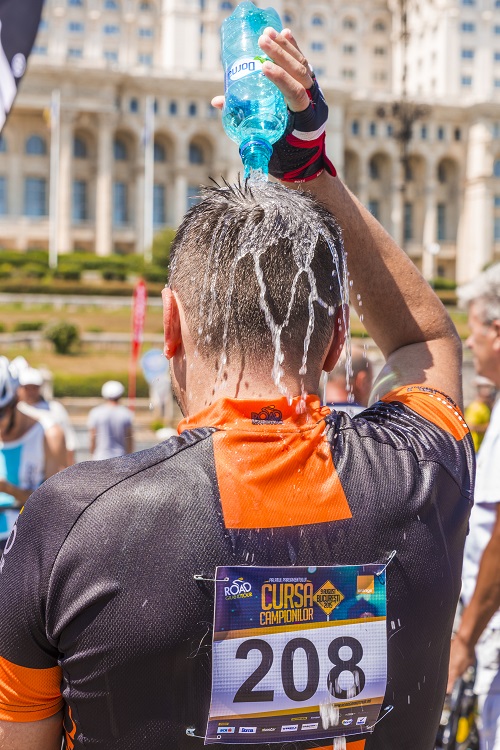
July might have been the hottest month in the history of the planet, but the heat has continued well into August. And that’s wreaking havoc on fall high school sports in parts of the country.
“More than 3.5 million students will be involved in outdoor practices this month — football, cross country, soccer, field hockey and marching band — and heat awareness must be the first item addressed in the daily scheduling of events,” Karissa Niehoff, chief executive officer of the National Federation of State High School Associations, wrote in her online column, “The NFHS Voice” on Aug. 9. “Even volleyball teams practicing in hot gyms without air conditioning must be on guard.”
She cited data from the National Center for Catastrophic Sport Injury Research indicating that during the most recent 10-year period, 42 exertional heat stroke events occurred in high school athletes — with 18 deaths (15 in football, two in basketball and one in soccer).
To that end, the federation’s Sports Medicine Advisory Committee has developed a “Heat Acclimatization and Heat Illness Prevention Statement.” It contains seven fundamentals of a heat acclimatization program and emphasizes how critical it is to implement specific hydration strategies, modify activities in relation to environmental heat stress and individual risk factors, and closely monitor all athletes for signs of heat illness.
“Understanding how to stay safe in the heat while playing sports means looking at more than just the temperature. Things like the dew point and wet bulb globe temperature are also critically important,” noted HighSchoolOT.com. “The dew point is the measure of how much water is in the air, which is what makes it feel humid. If you step outside and the air feels thick, chances are the dew point is high. … When dew points rise, it makes it harder for sweat to evaporate off the skin, which can increase the chances that someone suffers from a heat-related illness.”
 The website also explained that “the wet bulb globe temperature is a measure of heat stress when in direct sunlight. The temperature in direct sunlight is only part of the calculation. The wet bulb globe temperature also includes humidity, the wind speed, sun angle, and cloud cover.”
The website also explained that “the wet bulb globe temperature is a measure of heat stress when in direct sunlight. The temperature in direct sunlight is only part of the calculation. The wet bulb globe temperature also includes humidity, the wind speed, sun angle, and cloud cover.”
Last year, the NFHS Foundation announced a grant program to distribute 5,000 wet bulb globe temperature (WBGT) devices to high schools across the country, which allow coaches, athletic trainers and others to use its readings to help determine if the weather is appropriate to hold outdoor activities.
Some schools are taking extra precautions with young athletes training outdoors.
“We have injury/heat-related ice ready to go. Some of my other coaches, on days when we’re going to spend the full day on the practice field, they’ve provided canopies and pop-ups,” Terry Bailey, head football coach at Starkey Ranch K-8 School in Odessa, Fla., told ABC-TV affiliate WFTS in Tampa Bay. “We’ve had community members bring out coolers full of soaked towels and things of that manner, which has been very beneficial, and then when the gym is available, we also do combinations of outdoor/indoor split practice.”
Hydration has been huge, too.
“We tell the kids all the time that you’re not going to be able to hydrate five minutes before practice, that it starts the day before,” Bailey said, adding that he and his staff don’t force players to participate in drills if they think they need a break. “We tell them that they’re more than [welcome] to run over, grab a quick splash, get out of the sun for a second, and then they can rejoin the drill at their leisure.”
In central Texas, where cities broke records for the longest streak of triple-digit temperatures this summer, the Round Rock Independent School District teamed up with Ascension Texas Orthopedics & Sports Medicine (which is part of Ascension Seton Medical Center and Dell Children’s Medical Center) to ensure athletic trainers are monitoring high-intensity practices for football and other sports.
“They work with the coaches to make sure there are plenty of rest breaks and drink breaks, as well as looking for the signs and symptoms of heat illness,” Dr. Leigh Romero, a sports medicine physician with Ascension Seton, told CBSAustin.com. “Sometimes we’ll weigh athletes before and after practice, so we can see if they’re losing a lot of water weight during practice.”

